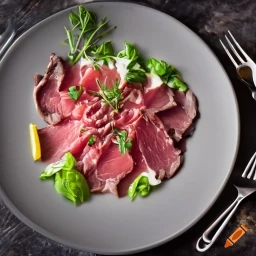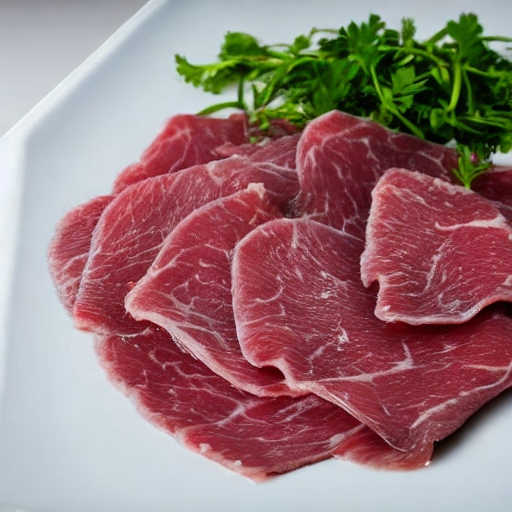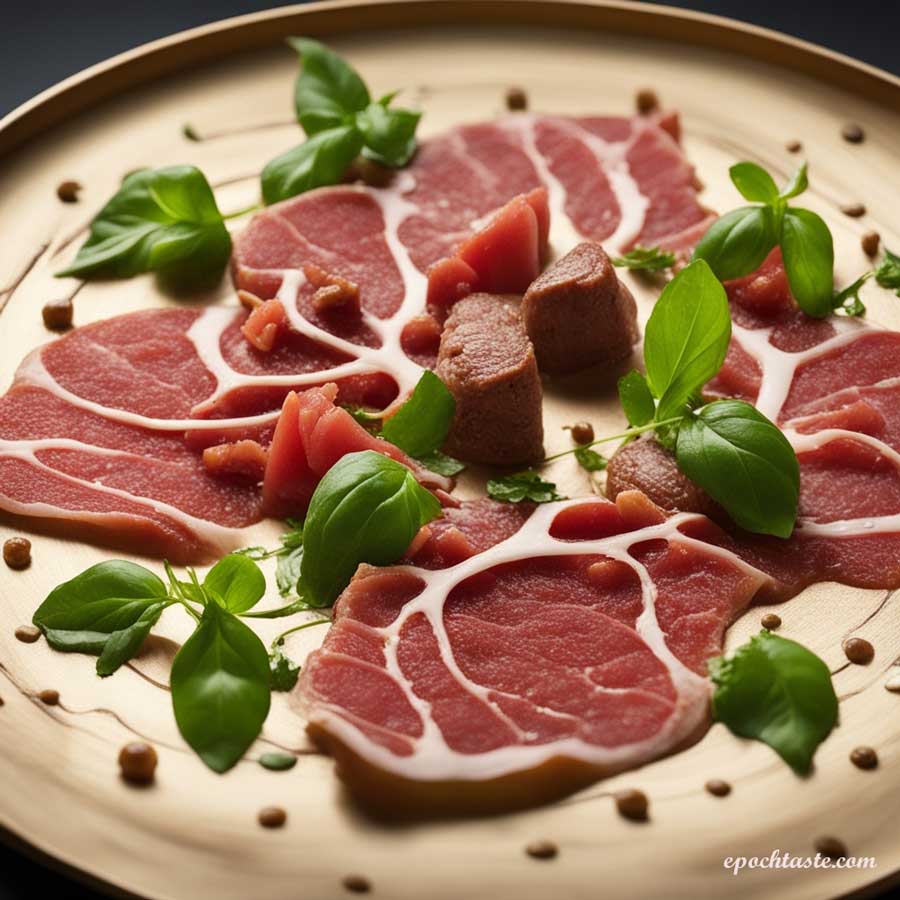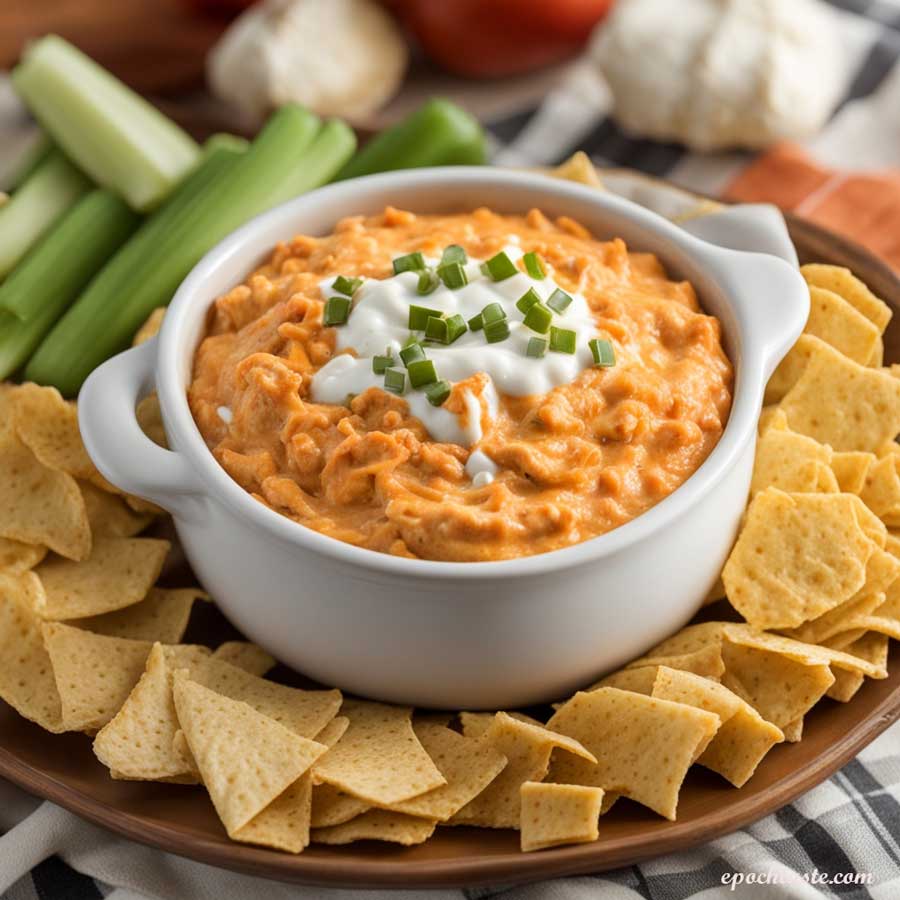Carpaccio beef, a dish with its roots deeply embedded in the heart of Italian culinary tradition, has evolved into a global sensation, gracing the tables of fine dining establishments worldwide. The delicate artistry involved in its preparation and the exquisite taste it offers have made carpaccio beef a symbol of sophistication and refined dining. In this extensive exploration, we will dive into the nuances of carpaccio beef, addressing its origins, taste, ingredients, and the various dimensions that make it a culinary masterpiece.

What is Carpaccio Beef?
Carpaccio is a dish that typically features thinly sliced raw meat or fish, often served as an appetizer. Carpaccio beef specifically refers to a variation made with raw beef, which is sliced very thinly and usually seasoned or marinated before serving. The dish is named after the Italian painter Vittore Carpaccio, known for his use of vibrant red tones, and the idea is to capture the visual appeal of raw beef thinly sliced and arranged on a plate.
The beef used for carpaccio is typically of high quality, as it is consumed raw. Fillet or sirloin are common choices, and the meat is sliced paper-thin to ensure tenderness. The slices are often arranged on a plate and drizzled with a dressing made of olive oil, lemon juice, salt, and pepper. Garnishes such as capers, arugula, or Parmesan cheese may also be added for flavor and presentation.
Carpaccio is considered a delicacy in many places and is appreciated for its delicate texture and fresh, clean flavors. It’s essential to use fresh, high-quality ingredients and follow proper food safety guidelines when preparing carpaccio to minimize the risk of foodborne illnesses associated with consuming raw meat.

What is Carpaccio Beef Used For?
Carpaccio beef is primarily used to create a dish called “beef carpaccio,” which is a popular appetizer or starter in many restaurants. The dish is valued for its elegant presentation, delicate flavors, and the use of high-quality, thinly sliced raw beef. Here are some common uses and characteristics of carpaccio beef:
- Appetizer or Starter: Beef carpaccio is often served as an appetizer or starter in fine dining establishments. The thin slices of raw beef are arranged on a plate and typically drizzled with a flavorful dressing, such as olive oil and lemon juice.
- Gourmet Dish: Carpaccio is considered a gourmet dish due to its use of premium cuts of beef and the emphasis on presentation. It is often served in upscale restaurants where the focus is on high-quality ingredients and culinary artistry.
- Light and Refreshing Option: Carpaccio is a light and refreshing dish, making it a popular choice for those who prefer lighter fare or want to enjoy the natural flavors of the beef without heavy cooking methods.
- Creative Variations: While traditional beef carpaccio is made with raw beef, chefs may also create variations using different meats (such as venison or tuna) or incorporate unique flavor combinations and garnishes to add a creative twist to the dish.
- Celebration of Fresh Ingredients: The dish highlights the freshness and quality of the ingredients, as it relies on thinly sliced, high-quality raw beef. The use of fresh herbs, citrus, and other seasonings enhances the overall experience.
- Visual Appeal: Carpaccio is known for its visually striking presentation. The thin slices of beef are often arranged artistically on the plate, creating a visually appealing and appetizing dish.
It’s important to note that carpaccio beef should be handled and prepared with care to ensure food safety, as the meat is consumed raw. Adhering to proper hygiene and sourcing high-quality, fresh ingredients are crucial when making or consuming carpaccio.
What is Carpaccio Beef Taste Like?
Carpaccio beef has a distinct taste that is influenced by the quality of the beef, the freshness of the ingredients, and the seasonings used in the dish. Here are some characteristics of the taste of beef carpaccio:
- Rich Beef Flavor: The primary taste of carpaccio beef is the rich and beefy flavor of the raw meat. The use of high-quality cuts, such as fillet or sirloin, contributes to a more intense and enjoyable beef taste.
- Tender Texture: The thin slicing of the beef results in a tender and almost melt-in-your-mouth texture. This is due to the delicate nature of the raw meat, which has not been subjected to cooking processes that can alter its texture.
- Clean and Fresh: Carpaccio is known for its clean and fresh taste. The minimal preparation allows the natural flavors of the beef to shine, and the addition of simple seasonings, such as olive oil and lemon juice, enhances the overall freshness of the dish.
- Mild Sweetness: Some may detect a subtle sweetness in carpaccio beef, especially if the beef is of high quality. This sweetness is a natural component of fresh, well-marbled beef.
- Citrusy and Herby Notes: Many carpaccio recipes include a dressing made with olive oil and lemon juice, which imparts citrusy notes to the dish. Additionally, the use of fresh herbs like parsley or basil can contribute herbal undertones.
- Umami Complexity: The raw beef in carpaccio can exhibit umami, the savory and complex taste often associated with high-quality meats. This umami flavor is heightened by the use of salt and other seasonings.
- Balanced Flavors: When well-prepared, beef carpaccio offers a balanced combination of flavors – the richness of the beef, the brightness from citrus, the peppery notes from arugula (if used), and the savory elements from any added cheese or seasonings.
It’s important to note that individual preferences for the taste of beef carpaccio can vary, and the overall experience is influenced by the specific ingredients and seasonings used in the dish. When enjoying beef carpaccio, the emphasis is on savoring the natural qualities of high-quality raw beef in a refined and delicately seasoned presentation.
What is Carpaccio Beef Made Of?
Carpaccio beef is made primarily of raw beef that is thinly sliced and typically served as an appetizer. Here are the key components of carpaccio beef:
- Raw Beef: The main ingredient is high-quality, fresh, and tender beef. Common choices include fillet or sirloin. The beef is sliced paper-thin to ensure a delicate texture and is often selected for its premium quality to be consumed raw.
- Dressing: Carpaccio beef is often drizzled with a dressing to add flavor and moisture to the dish. A classic dressing may include extra-virgin olive oil, lemon juice, salt, and pepper. This combination enhances the natural taste of the beef while providing a hint of citrusy freshness.
- Seasonings: Depending on the recipe and personal preferences, carpaccio beef may be seasoned with additional ingredients. Common seasonings include salt and freshly ground black pepper. Some variations may include herbs such as parsley, basil, or chives for added aroma and flavor.
- Garnishes: Carpaccio is often garnished with complementary ingredients to enhance the overall experience. Common garnishes include capers, shaved Parmesan or Pecorino cheese, arugula, or microgreens. These additions contribute texture, flavor, and visual appeal to the dish.
- Accompaniments: Carpaccio is sometimes served with accompaniments such as crusty bread or toasted crostinis to provide a contrast in texture and offer a vehicle for enjoying the beef and its toppings.
It’s important to note that carpaccio beef is a dish that emphasizes the natural flavors and quality of the raw meat. Due to the nature of the preparation, ensuring the freshness and safety of the beef is crucial. Additionally, the dish is often presented in an aesthetically pleasing manner, with the thinly sliced beef arranged on a plate and adorned with the various seasonings and garnishes.
What is Carpaccio Beef in English?
In English, “Carpaccio Beef” refers to a dish known as “beef carpaccio.” This dish typically consists of thinly sliced raw beef, often of high quality, served as an appetizer. The beef is usually seasoned or marinated, and it is commonly accompanied by a dressing made with ingredients such as olive oil, lemon juice, salt, and pepper. The dish is named after the Italian painter Vittore Carpaccio, and it is celebrated for its elegant presentation, delicate flavors, and emphasis on the natural taste of the raw meat. Beef carpaccio is considered a gourmet dish and is popular in upscale restaurants and culinary settings.
What is Carpaccio Beef Called?
“Carpaccio Beef” is commonly referred to as “Beef Carpaccio.” The term “Beef Carpaccio” is used to describe a dish made with thinly sliced raw beef, often served as an appetizer. This dish is named after the Italian painter Vittore Carpaccio, and it has become a popular and elegant option in many restaurants, particularly those offering fine dining experiences. The preparation typically involves high-quality beef slices, a dressing made with ingredients like olive oil and lemon juice, and various seasonings and garnishes for added flavor and presentation.
Is Beef Carpaccio Safe?
The safety of beef carpaccio, like any dish involving raw meat, depends on the quality of the ingredients and proper food handling practices. Consuming raw or undercooked meat carries inherent risks, including the potential for foodborne illnesses.
Here are some key considerations to ensure the safety of beef carpaccio:
- High-Quality Ingredients: Start with fresh, high-quality beef from a reputable source. Choose cuts that are known for their tenderness and are suitable for raw consumption, such as fillet or sirloin.
- Proper Handling: Follow strict hygiene practices when handling raw beef. This includes using clean utensils and cutting surfaces, washing hands thoroughly, and preventing cross-contamination with other foods.
- Freshness: Ensure that the beef is fresh and has been stored at the appropriate temperature. Refrigerate the meat promptly and use it within a short timeframe to minimize the risk of bacterial growth.
- Food Safety Guidelines: Adhere to food safety guidelines, such as those provided by health authorities, when preparing raw meat dishes. This may include guidelines on storage, temperature control, and recommended cooking temperatures.
- Marination: Some recipes involve marinating the beef in an acidic dressing (e.g., lemon juice) before serving. The acidity can help reduce the risk of harmful bacteria, but it’s important to note that it may not eliminate all potential pathogens.
- Serving Size: Serve appropriately sized portions to ensure that the beef reaches a safe temperature more quickly if any cooking is involved. Thinner slices are generally preferred for carpaccio.
- Individual Health Considerations: Individuals with compromised immune systems, pregnant women, young children, and the elderly may be more susceptible to foodborne illnesses. It’s essential for these individuals to consult with a healthcare professional regarding the safety of consuming raw or undercooked meats.
Ultimately, while many people enjoy beef carpaccio without issue, it’s important to be aware of the associated risks and take necessary precautions to minimize them. If you have concerns about food safety or specific health conditions, it’s advisable to consult with a healthcare professional or choose alternative cooking methods to ensure the beef is thoroughly cooked.
How to Eat Carpaccio
Eating carpaccio is a delightful experience that involves savoring the delicate flavors of thinly sliced raw beef. Here’s a guide on how to eat carpaccio:
- Appreciate the Presentation:
- Carpaccio is often served in an artistic arrangement on a plate. Take a moment to appreciate the visual presentation before digging in.
- Use Utensils:
- Carpaccio is typically eaten with utensils, such as a fork and knife, to help cut and lift the thin slices of beef.
- Combine Flavors:
- Ensure each bite includes a balance of the beef, dressing, and any accompanying garnishes. The goal is to enjoy the combination of flavors and textures.
- Experiment with Garnishes:
- Try the beef with the various garnishes provided, such as capers, shaved Parmesan cheese, or arugula. These elements add complexity and complement the meat.
- Savor the Texture:
- Carpaccio offers a unique texture – the thin slices of raw beef are tender and should almost melt in your mouth. Take your time to savor the delicate texture.
- Dip in Dressing:
- If a dressing is served alongside the carpaccio, you can choose to dip each bite into the dressing for added flavor. The dressing often includes olive oil, lemon juice, salt, and pepper.
- Pair with Bread:
- Some people enjoy eating carpaccio with a side of crusty bread or toasted crostinis. Use the bread to scoop up the beef and accompanying toppings.
- Mindful Eating:
- Carpaccio is a dish to be enjoyed slowly and mindfully. Take small bites, appreciate the flavors, and engage in conversation if sharing the dish with others.
- Respect Personal Preferences:
- Everyone has different preferences, so feel free to customize your carpaccio experience based on your taste. Adjust the amount of dressing or experiment with different combinations of garnishes.
- Follow Hygiene Practices:
- When sharing a plate of carpaccio, use serving utensils to avoid cross-contamination. Adhere to good hygiene practices, especially when handling raw meat.
- Consider Dietary Restrictions:
- Be mindful of any dietary restrictions or preferences. If you have concerns about consuming raw meat or specific ingredients, communicate with the restaurant staff or adjust the dish to suit your needs.
Remember that carpaccio is a dish that highlights the quality of the raw ingredients, so choosing a reputable establishment with a focus on freshness and food safety is key to enjoying it safely.
Beef Carpaccio Dressing
The dressing for beef carpaccio is typically a simple yet flavorful combination that enhances the natural taste of the raw beef. Here’s a basic recipe for a classic beef carpaccio dressing:
Ingredients:
- 3 tablespoons extra-virgin olive oil
- 1 tablespoon freshly squeezed lemon juice
- Salt and freshly ground black pepper, to taste
Instructions:
- Whisk Together:
- In a small bowl, whisk together the extra-virgin olive oil and freshly squeezed lemon juice. The ratio of oil to lemon juice can be adjusted based on personal preference.
- Season with Salt and Pepper:
- Add salt and freshly ground black pepper to the dressing, adjusting the quantities to taste. The seasoning should complement the flavors of the beef without overpowering it.
- Taste and Adjust:
- Taste the dressing and adjust the balance of oil, lemon juice, salt, or pepper if needed. The goal is to achieve a well-balanced dressing that enhances the overall flavor of the carpaccio.
- Drizzle Over Carpaccio:
- Just before serving, drizzle the dressing evenly over the thinly sliced raw beef. The dressing adds moisture and a burst of citrusy freshness to each bite.
- Optional Additions:
- Some variations of beef carpaccio dressing may include additional ingredients for added complexity. Optional additions can include a small amount of Dijon mustard, finely chopped garlic, or balsamic vinegar. Experiment with these additions to suit your taste preferences.
Remember that the beauty of beef carpaccio lies in its simplicity, so the dressing is meant to enhance rather than overshadow the natural flavors of the meat. Feel free to customize the dressing based on your preferences, and adjust the quantities according to the amount of carpaccio you are preparing.
Conclusion
Carpaccio beef, with its roots in Italy, has become a global phenomenon, captivating the palates of discerning diners. Its delicate preparation, nuanced flavors, and visual appeal make it a true culinary masterpiece. Whether enjoyed as an appetizer or a main course, carpaccio beef invites individuals to embark on a gastronomic journey that celebrates simplicity and sophistication. By prioritizing ingredient quality, adhering to strict safety practices, and appreciating the artful nuances of its consumption, one can truly savor the timeless elegance of beef carpaccio.



